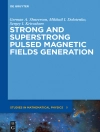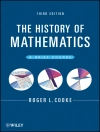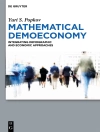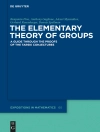Doctoral Thesis / Dissertation from the year 2000 in the subject Mathematics — Applied Mathematics, grade: 1, 0 (A), University of Osnabrück (Institute for Environmental System Research, Mathematics/Computer Science), language: English, abstract: Summary
Environmental risk assessment of chemical substances in the European Union is based on a harmonised scheme. The required models and parameters are laid down in the Technical Guidance Document (TGD) and are implemented in the EUSES software. Although the results may have a considerable ecological and economic impact, guidance is rarely given on the applicability of the framework. To fill this gap, an evaluation study of the TGD exposure models was carried out. In particular, the models for estimating chemical intake by humans were investigated. These models, which are a key component in risk assessment, involve a quantification of human contact with environmental contamination in various media of exposure through various exposure pathways. The objective of this study was two-fold: firstly, to develop an evaluation methodology, since no appropriate
approach is available in the scientific literature. Secondly, to elaborate applicability and limitations of the models and to provide proposals for their improvement.
The principles of model evaluation in terms of quality assurance, model validation and software evaluation were elaborated and a suitable evaluation protocol for chemical risk assessment models
was developed. Since scientific theories and the mathematical models embedded therein cannot be proved as true, a pragmatic meaning of validation is required, of which the primary purpose is to
increase the level of confidence placed in the model. The accuracy of the model outcome is a necessary, but insufficient criterion for the quality assurance of models. A wider approach is required
which examines the scientific inference that can be made about models with regard to their intended purpose. By reviewing the literature on the validation problem, it was found that all the facets of validation can be assigned to generic (internal) and task-specific (external) properties of a model. In this context, sensitivity and uncertainty analyses are essential to tackle the issues of uncertainty. Sensitivity analysis aims to ascertain how a given model depends upon the information fed into it. Uncertainty analysis aims to quantify the uncertainty regarding what comes out of the model. It was argued that targeted uncertainty analysis and sensitivity analysis, as a part of it, is capable of reducing critical uncertainties and represents an essential contribution for assuring the quality of a model.
[…]
Stefan Schwartz
Quality Assurance of Exposure Models for Environmental Risk Assessment of Substances [EPUB ebook]
Quality Assurance of Exposure Models for Environmental Risk Assessment of Substances [EPUB ebook]
Купите эту электронную книгу и получите еще одну БЕСПЛАТНО!
язык английский ● Формат EPUB ● страницы 401 ● ISBN 9783638103749 ● Размер файла 7.0 MB ● издатель GRIN Verlag ● город München ● Страна DE ● опубликованный 2001 ● Издание 1 ● Загружаемые 24 месяцы ● валюта EUR ● Код товара 3685440 ● Защита от копирования без












